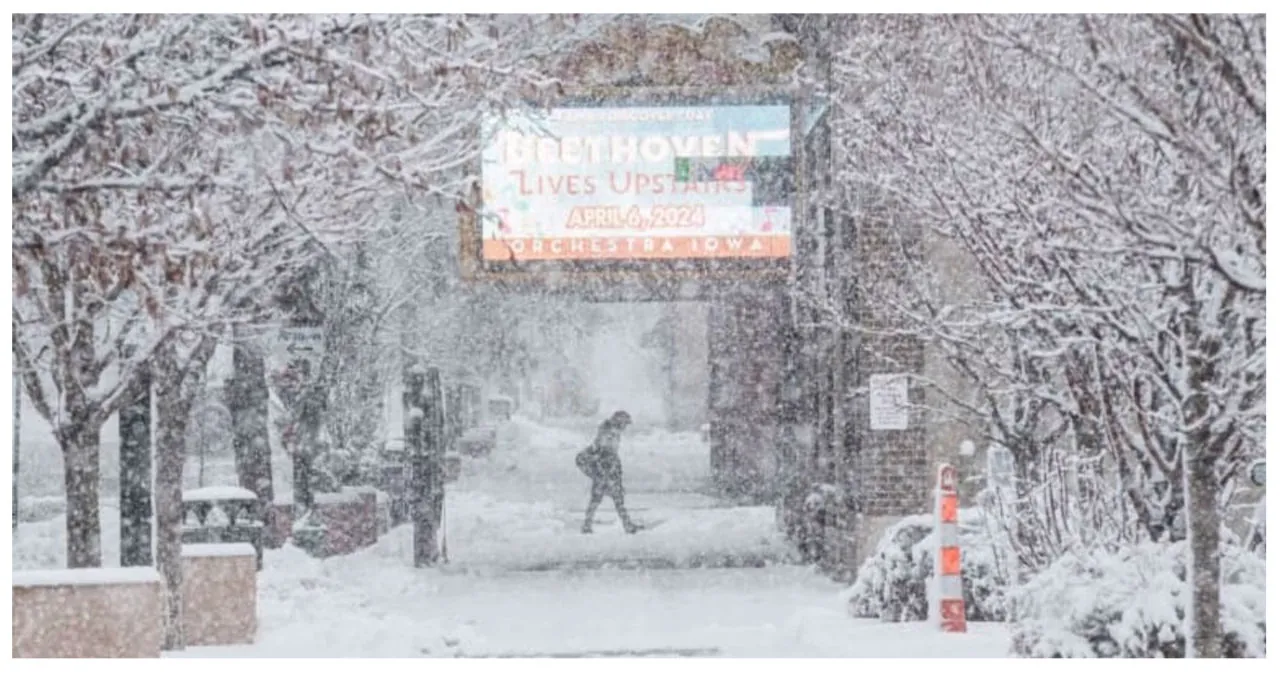Winter storms have been wreaking havoc in the Midwest since the beginning of the year, leaving behind heavy snow and freezing temperatures. In Iowa, the roads have become treacherous, leading to numerous accidents. Some areas have even experienced a snowpack of up to 20 inches, making this winter season exceptionally wet with 180 percent more precipitation than usual.
This week’s storm had a far-reaching impact, extending all the way down to Memphis. In response to the adverse weather conditions, the mayor of Memphis declared a state of emergency. The city experienced significant disruptions as six inches of snow covered the area, leading to severe traffic congestion. Tragically, the freezing temperatures claimed the lives of at least two individuals. Additionally, the southern cities of New Orleans and Baton Rouge were also affected by the extreme weather, resulting in the closure of schools and offices for several days due to sub-zero temperatures.
After enduring years of drought, the Mississippi River basin has been hit with heavy snowfall, bringing much-needed relief to the region. The snowfall comes as a welcome change, especially considering that some areas within the basin have experienced rainfall deficits exceeding a foot.
This week, the Midwest is expected to receive several more inches of snow. Fortunately, next week, higher temperatures will help melt some of the recent snow and ice. As the snow melts, the water will flow into the waterways in Iowa and beyond, replenishing the stream flows that have been greatly affected by the drought. However, this could also pose a risk of flooding downstream.
Most of Minnesota and northern Wisconsin currently have below-average snowpacks, which is quite different from last year’s historic snowfall that caused flooding on the Mississippi River. On the other hand, the rest of the Midwest is experiencing above-average snowpack. Eastern Nebraska, northern Illinois, and southern Wisconsin are particularly covered in about a foot of snow.
Drought conditions usually don’t get better during the winter because frozen soils can’t absorb precipitation. However, the unusually warm December allowed rainfall to seep into the soil in the western Corn Belt. Some areas in Iowa even received more than twice the average rainfall for the month. As a result, drought conditions have improved in western Minnesota, Kansas, and Missouri.
Dennis Todey, director of the U.S. Department of Agriculture’s Midwest Climate Hub, highlighted the significance of the timing, stating, “That was truly advantageous as the soils had not yet frozen. A substantial portion of the precipitation was able to penetrate into the soil.”
The winter storms that swept across the Midwest even brought rain to certain regions of the basin, especially in southern Illinois and Missouri, before the ground froze.
Winter weather advisories are currently in effect in the upper Mississippi River basin, while freeze warnings and watches cover the lower basin. Due to the frozen ground in the Midwest, the soil is unable to absorb the anticipated snowmelt next week. However, this excess water can serve a beneficial purpose by replenishing waterways that have been suffering from drought conditions across the basin.
The summer drought of last year had a ripple effect throughout the basin, causing various challenges and threats. One of the consequences was the intrusion of saltwater, which posed a threat to the drinking water in New Orleans. Additionally, the drought led to ongoing marsh fires in Louisiana, exacerbating the environmental situation. Furthermore, agriculture and shipping faced difficulties upriver due to the drought. These cascading impacts highlighted the far-reaching consequences of the summer drought.
Farmers faced challenges in providing water to their cattle in the previous year. In fact, public water supplies had to resort to emergency measures due to the depletion of their resources. For instance, in Iowa, a community contemplated the idea of utilizing recycled wastewater as a potential source of drinking water. It is evident that water scarcity was a prevalent issue in several areas, as mentioned by Todey, who emphasized the dryness of soils, aquifers, ponds, lakes, and rivers. As a result, any form of runoff water was considered valuable and beneficial in such circumstances.
Next week, much of the Midwest can expect overnight lows to remain below freezing. This will help preserve the existing snowpack and mitigate the risk of widespread flooding.
The melting could potentially result in ice jams, where clusters of river ice obstruct the flow, and localized flooding in the upper Mississippi River basin. Flash flood watches and warnings were in effect in certain areas of Illinois as of Thursday afternoon. However, overall, the current water levels in the waterways are sufficiently low to accommodate additional water.
According to state climatologist Justin Glisan, one positive aspect of this drought is that the inland streams and rivers can handle a large influx of water.
The southern region of the Mississippi River basin, located below Cairo, Illinois, will unfortunately not experience significant snowfall to alleviate the long-standing drought conditions.
According to Barry Keim, a professor at Louisiana State University and former state climatologist, the current weather conditions may provide some relief from drought. While he acknowledges that the recent rainfall may not have a significant impact, he highlights an interesting benefit of the unseasonably cold weather in the south. The frozen moisture in the soil prevents further drying out of the ground, offering a different form of relief.
Meteorologists are anticipating a potential improvement in soil moisture levels across the region during the spring season. With the persisting El Nino weather pattern throughout the remaining winter months, the upper U.S. can anticipate an increase in temperatures and a higher frequency of active storms over the next six weeks.
According to Todey, there are significant rainfall deficits that have accumulated over the past few years, and it is important to address these deficits before discussing any potential improvements in drought conditions.

